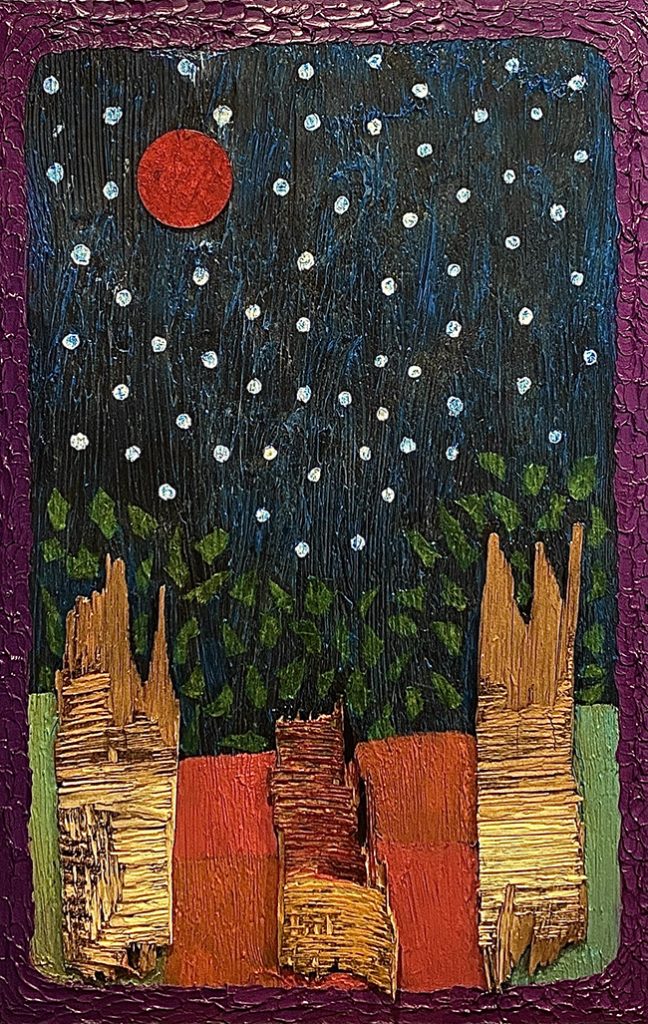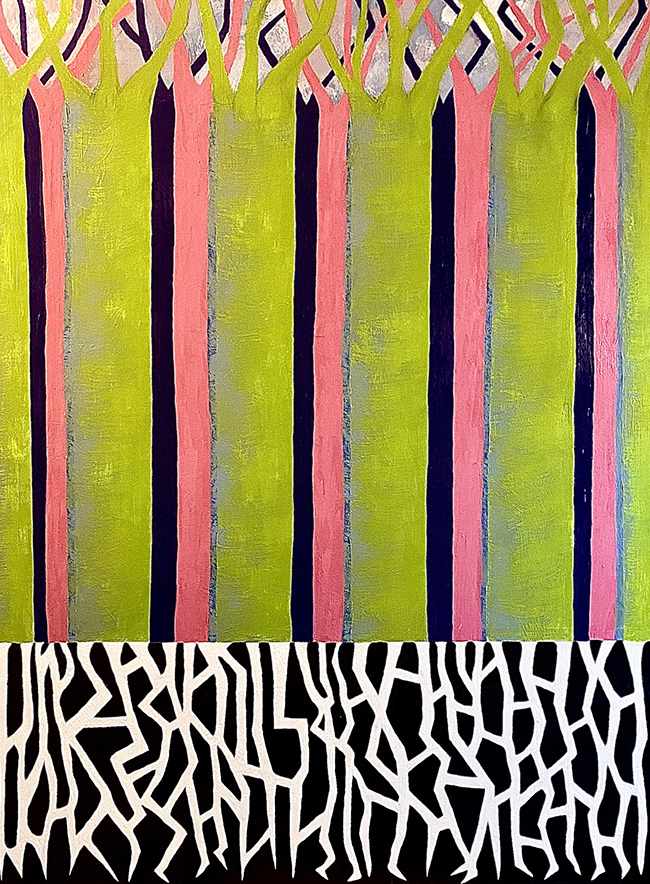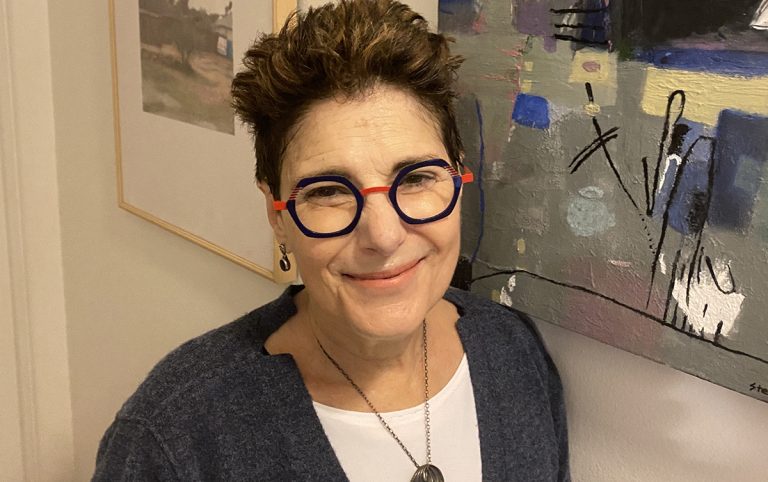Steffanie Samuels is an environmental artist urging us to confront the harsh realities of climate change. A graduate of the University of Michigan, Samuels has traversed a remarkable artistic journey, transitioning from being an award-winning ceramic sculptor to specializing in abstract environmental art. Before delving into the realm of oil painting and mixed media, she left her mark in the world of ceramic sculpture, earning accolades along the way. However, her artistic progress did not stop there. Steffanie Samuels redirected her creative energies toward a cause that transcends the boundaries of galleries and museums – climate change. Her art became a potent tool, a visual manifesto aimed at reminding the public of the stark reality we face. For Samuels, art is not merely a decorative expression; it is a powerful medium to instigate social and political awareness.
Samuels steps away from abstraction, offering a more traditional portrait. While much of her work deals with environmental themes, this piece brings the human element forward. The portrait reflects her early background in ceramic sculpture, hinting at her ability to capture the essence of a subject through minimalistic and elegant details. Samuels demonstrates that while her work has evolved toward mixed media, her foundation in form and structure remains ever-present. The softness of her brushstrokes and the attention to detail in this portrait draw viewers in, creating a direct conversation between the art and its audience. This dialogue between subject and viewer is central to Samuels’ work, no matter the medium.

Climate Migrants, one of Samuels’ pieces, addresses a theme that is becoming all too common in the contemporary world – the displacement of people due to environmental disasters. In this 18”h x 22”w mixed-media work, Samuels layers textures and materials to create a chaotic yet compelling image that captures the harsh reality of climate-induced migration. There’s a palpable tension in the piece, reflected in the fragmented forms and the unsettling energy of the colors. The way Samuels integrates various media not only speaks to her technical skill but also echoes the fragmented lives of those forced to leave their homes due to climate change. The piece transcends mere aesthetics, pushing viewers to reflect on the human cost of environmental degradation.

In Red Moon Dance, a 29”h x 19”w x 2”d work crafted from oil paint, sycamore bark, and Japanese paper, Samuels delves into the spirituality and reverence that Indigenous cultures hold for nature. The integration of natural elements, such as sycamore bark, directly connects the artwork to the environment it seeks to honor. There’s a rhythmic, almost meditative quality to this piece, as the reds and browns of the bark interplay with the soft, translucent Japanese paper. It symbolizes the harmony and balance that many Indigenous peoples strive to maintain with the natural world. Samuels’ choice of materials further strengthens this bond, reminding us of the interconnectedness between humans and the environment. Through Red Moon Dance, she encourages viewers to reconnect with a spiritual understanding of nature and consider how far modern society has strayed from that path.

One of Samuels’ larger pieces, Tread Lightly in the Forest, stretches four feet high and three feet wide, commanding attention through its sheer size. This oil-on-canvas work explores the communication systems among trees, highlighting the fascinating network formed by their roots and the fungi that link them together. The deep greens and browns in the painting reflect the quiet, ancient wisdom of forests, while lighter shades suggest the delicate balance that ecosystems rely on. There’s an almost mystical feel to the piece, as though the viewer is being invited to listen to the whispered conversations of the trees. Samuels captures this sense of wonder while also subtly urging us to tread carefully – both literally and metaphorically – in our interactions with the natural world. The painting is a reminder that ecosystems are fragile, and our actions have consequences far beyond what we may immediately see.
Through her art, Steffanie Samuels uses her talents to both reflect on and challenge the world around her. Her work serves as a call to action, whether it’s the human portrait confronting the viewer, the displacement of climate migrants, the spiritual reverence of Indigenous peoples, or the intricate communication of trees. Samuels reminds us that the environment is not just a backdrop to human life, but an active, living system that demands our attention, respect, and care. Each piece in her collection reflects a different aspect of our relationship with the planet, urging us to think critically about the impact of our actions and the urgent need for change.

